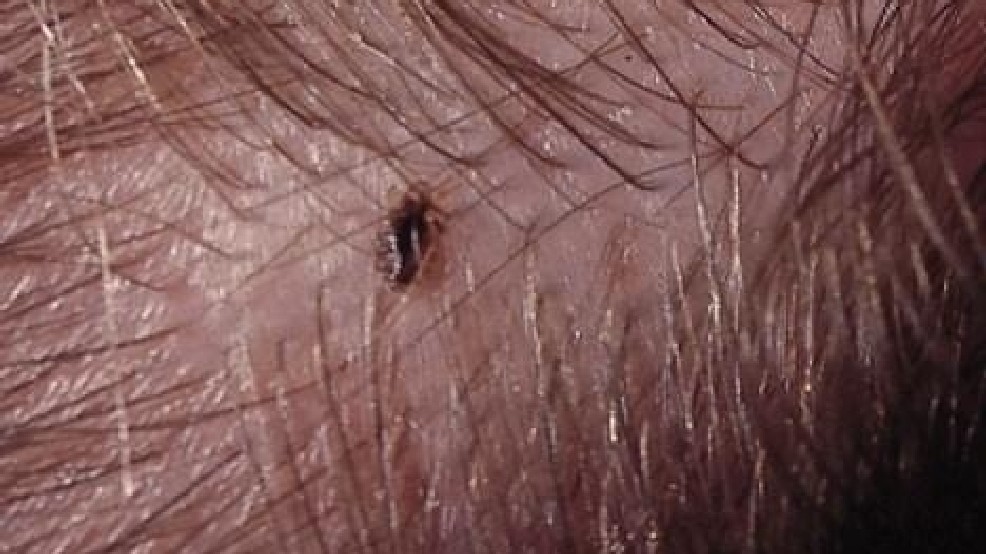

Quicklist: 6category: Risky Superbugstitle: The Global Threat: Tuberculosisurl:text: Tuberculosis kills 1.34 million people each year worldwide.
SUPER STRAIN OF HEAD LICE CDC SERIES
You have a spiraling series of problems." "These people don't want to be recognized in their home environment as having one of these infections, which a visit would kind of announce. "We might have to rely on intravenous or intramuscular treatments, meaning the patient would have to come in or someone would have to go to their home," said Schaffner. Antibiotic resistance means sexually transmitted infections once cured with a few pills could require treatments that are more invasive. Quicklist: 5category: Risky Superbugstitle: The Sexually Transmitted Infections: Gonorrhea and Chlamydiaurl:text: Super gonorrhea may sound funny, but it's no joke. government must take steps to ban the use of penicillin and tetracycline - antibiotics used to treat pneumonia, strep throat and urinary tract infections in humans - in animals.

being very aggressive or successful in dealing with this problem."Ī federal court judge ruled Thursday that the U.S. "Quite frankly, I think that's embarrassing," said Bartlett. But the United States continues to lag behind, only recently restricting the use of antibiotics called cephalosporins in livestock. The European Union has banned antibiotics as growth-promoters.
/cloudfront-us-east-1.images.arcpublishing.com/gray/TNVO67GREJHMLOWPSRIZMBFGDQ.jpg)
But as it becomes resistant, what was once simple will become complicated," said Schaffner. coli is the most common cause of simple urinary tract infections, which we can very quickly and easily treat today. coli causing urinary tract infections in women could be traced back to chickens fed antibiotics. Centers for Disease Control and Prevention reported that drug-resistant strains of E. "Now we're tracing some of these antibiotic resistant infections back to the farm."Įarlier this month, the U.S. are given to animals, not people," said Bartlett. "Eighty percent of antibiotics in the U.S. Quicklist: 4category: Risky Superbugstitle: The Foodborne Bugs: Escherichia Coli and Salmonellaurl:text: The bacteria behind food poisoning are becoming drug resistant, partly because farm animals are fed antibiotics to promote growth. All those foreign bodies become susceptible to infection," said Bartlett. "When people come into the hospital, they often get metal put in them, or plastic lines. The bacteria invade vulnerable bodies through hospital equipment, such as surgical implants and central lines. "Now we've used so many antibiotics to treat them, they've been trained to become resistant." John Bartlett, chief of infectious diseases at Johns Hopkins University School of Medicine in Baltimore. "These organisms were present in hospitals 20 years ago," said Dr. Now those six bugs are escaping antibiotics. Quicklist: 3category: Risky Superbugstitle: The Hospital Lurkers: Clostridium Difficile and Acinetobacterurl:text: Doctors have long been battling a group of six hospital-borne pathogens dubbed Eskape: Enterococcus, Staphylococcus, Klebsiella, Acinetobacter, Pseudomonas and Enterobacter. It can spread among people working out at the gym through contaminated towels or equipment, and has even been passed among children at day care facilities. But the number of MRSA cases out in the community is on the rise, according to the NIH. MRSA infections usually strike elderly hospital inpatients or nursing home residents. William Schaffner, chairman of prevention at Vanderbilt University Medical Center. "MRSA continues to be the biggest threat because it could become more widespread," said Dr. If the bug invades a wound, it can cause an infection that's minor and localized, as in a pimple, or serious and widespread, involving the heart, lungs, blood and bones. Roughly one in 50 people carries a strain of staph resistant to common antibiotics, according to the National Institutes of Health. But few people understand just how pervasive the original superbug has become. Quicklist: 2category: Risky Superbugstitle: The Original Superbug: Staphylococcus Aureusurl:text: Almost everyone's heard of MRSA, or methicillin-resistant Staphylococcus aureus. You're building up a pretty strong bug, hence 'super' lice."Īs lice become more "immune" to normal lice shampoos, parents are turning to experts, such as Botham, who pick the lice from hair by hand for a very high price.Ī session at the Hair Fairies costs about $300. "They call it 'super' lice, because it's kind of like antibiotics to humans when a product is misused," said Maria Botham, owner of the Hair Fairies, a children's hair salon for lice removal. Quicklist: 1category: Risky Superbugstitle: The Latest Head-Scratcherurl:text:In schools across the country, kids are becoming infected with a new breed of "super lice." The little pests have developed harder exo-skeletons and lay eggs at different times, so they are not easily killed by the over-the-counter lice shampoo.


 0 kommentar(er)
0 kommentar(er)
